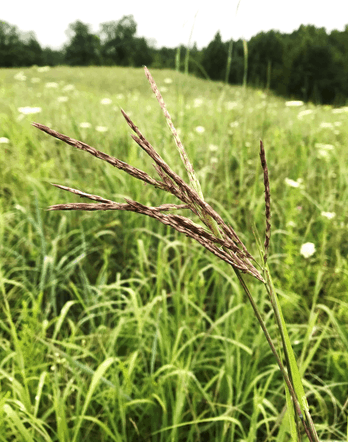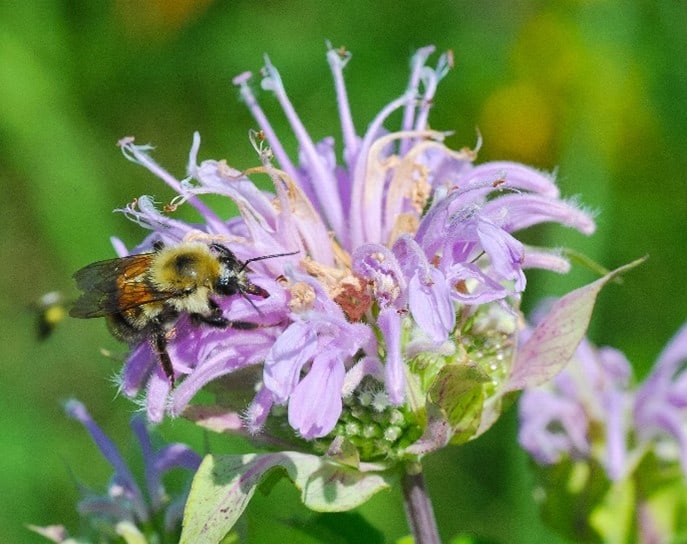The Credit River Watershed has several forests and wetlands but grasslands are another important ecosystem that are sometimes overlooked.
Grasslands are open areas filled with grasses and wildflowers with the occasional shrub and tree. The grasses found in these ecosystems are different from the grasses you’ll find on a well-manicured lawn. Not only are they taller, but these native grasses also have deeper roots that help them survive dry conditions.
In the Credit River Watershed, grasslands are considered ecosystems in transition and can eventually mature into a forest. However, natural disturbances like fires prevent trees and shrubs from maturing and taking over the grassland. Grasses can withstand low intensity fires and quickly grow back, while trees and shrubs cannot. The fires also burn any leaf litter and dead plants which help recycle the nutrients back into the soil.
Our Terrestrial Restoration and Management team manages a restored grassland at Upper Credit Conservation Area (UCCA). Earlier this spring, we planned and coordinated a controlled burn to mimic the fires that would naturally help maintain this ecosystem. Check out this drone footage from the controlled burn.


While grasslands are known for their abundance of grasses, they can have a rich diversity of flowering plants as well. Colourful flower species include: beautiful orange butterfly weed, yellow false sunflower, purple wild bergamot and white Virginia mountain mint. These flowers are an important food source for many butterflies and insects.


Grasslands provide important habitat for two bird species at risk in Ontario – eastern meadowlark and bobolink. These birds nest on the ground and rely on tall grasses and flowering plants to shield them from predators and weather.
Since 2013, our Integrated Watershed Monitoring Program (IWMP) team has monitored plants and birds in UCCA’s restored grassland. This monitoring allows us to
- Identify which grassland plants are growing
- Understand how the grassland transitions over time
- Determine if it’s providing habitat for eastern meadowlark, bobolink and other grassland bird species
The next time you find yourself at UCCA, see how many grassland plants and birds you can count from the trail. Share your findings with us on Instagram, Twitter, Facebook and LinkedIn!
By: Jose Maloles, Technician, Watershed Monitoring










